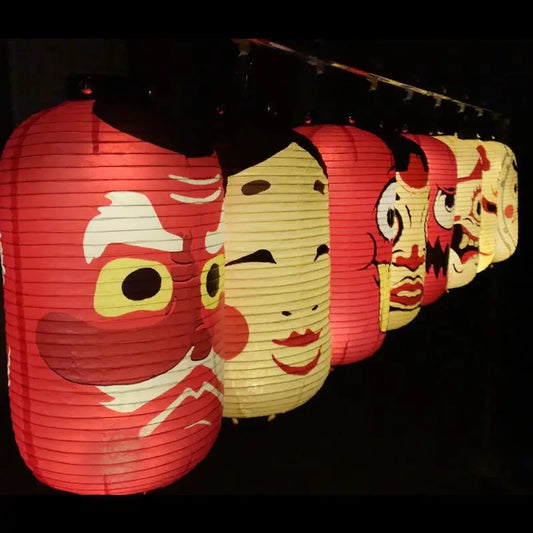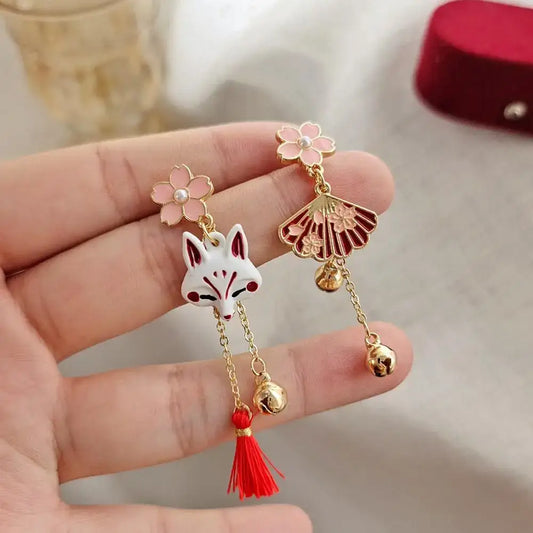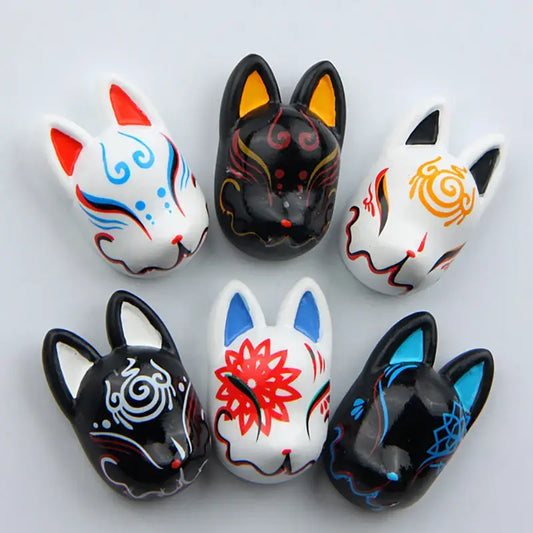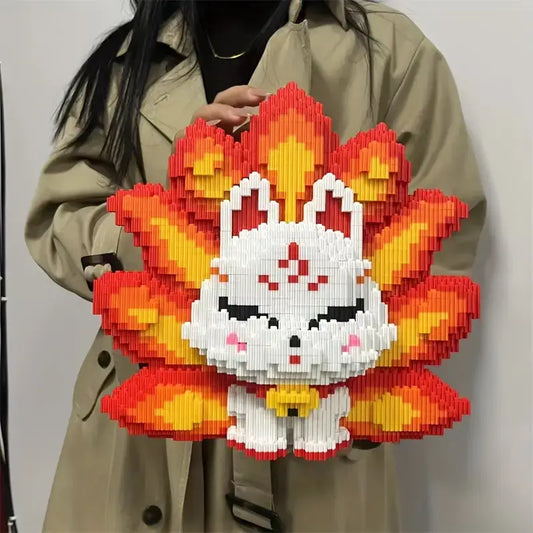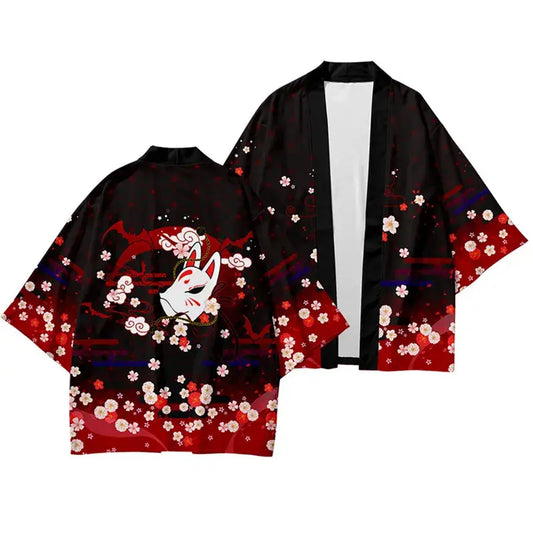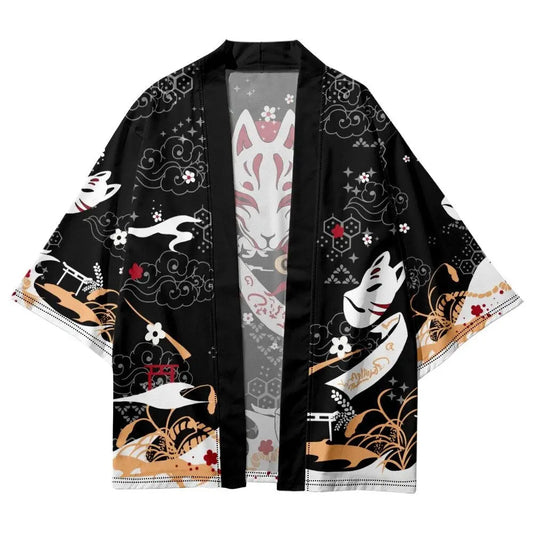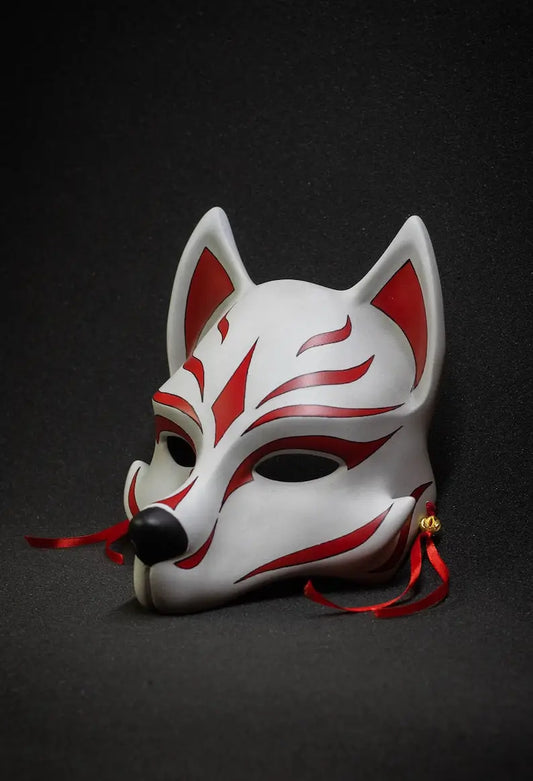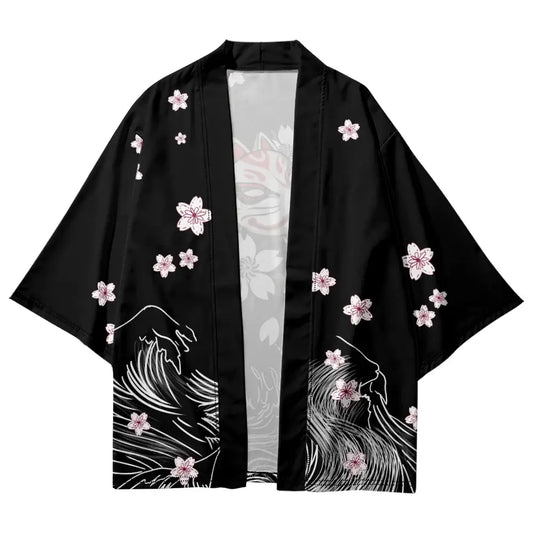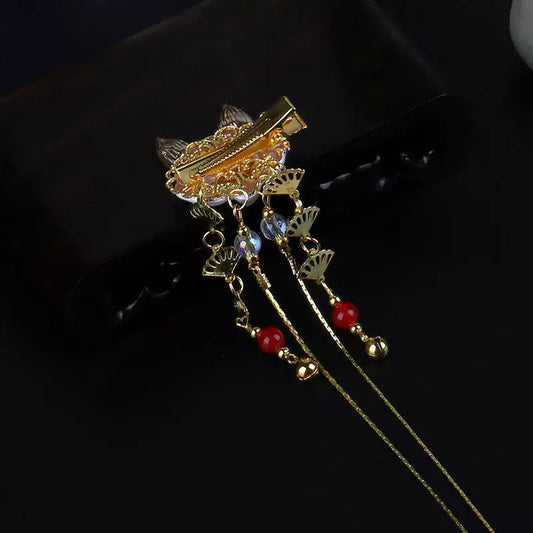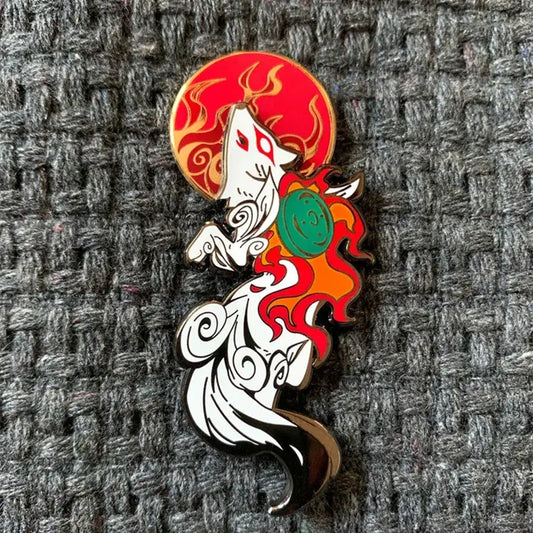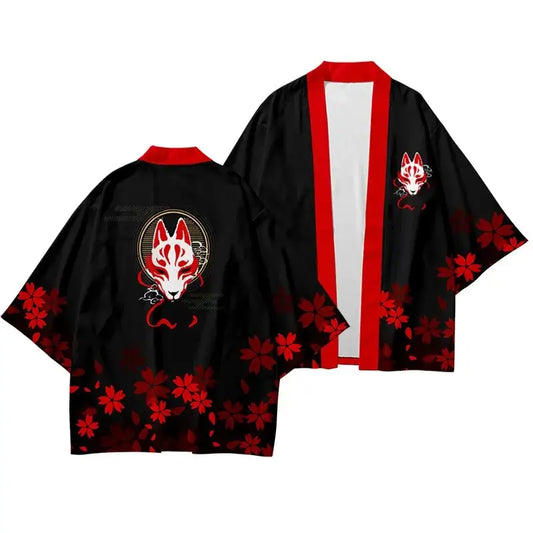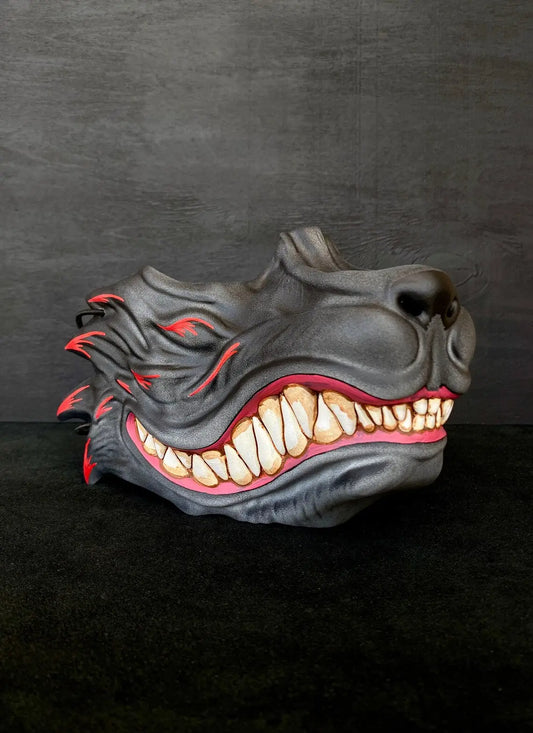🦊✨ Kitsune: The Enchanted Fox Spirits of Japan ✨🦊
🌸 Whispered Tails of the Fox Spirit 🌙
Somewhere between the whispering bamboo groves of Kyoto and the lantern-lit alleys of Edo’s old streets, there lies a tale passed down through generations. A tale that flickers like foxfire in the dark, of shapeshifting foxes that dance under the full moonlight, their golden fur shimmering with an otherworldly glow. These are the Kitsune (狐) — Japan’s legendary fox spirits, as enchanting as they are elusive.
More than just creatures of myth, Kitsune occupy a sacred space in the Japanese psyche. They are gods, tricksters, lovers, messengers, and teachers. They appear in Shinto shrines as divine emissaries of Inari, in Noh theatre as dramatic heroines, and in anime and manga as seductive enigmas. 🦊
Their stories are as many-tailed as the beings themselves. And the deeper one delves into their lore, the more one discovers that the Kitsune is not a singular being, but a multi-faceted force of nature, myth, and imagination.
🧭 What Is a Kitsune? A Spirit in Many Forms 🌬️
At its core, the word kitsune (狐) simply means “fox.” But in Japanese folklore, it goes far beyond the red-furred animal that roams the wilds. Kitsune are believed to be intelligent, magical foxes who grow wiser and more powerful with age. Their mystique lies in the ability to shapeshift—most famously into human form, often a beautiful woman or a wise elder.
But there's much more to their identity:
| 🧩 Aspect | 🦊 Description |
|---|---|
| 📜 Etymology | Derived from the Japanese words "kitsuru" (to come) and "ne" (to sleep), hinting at domesticity or presence |
| 💫 Magical Abilities | Shapeshifting, Illusions, Possession, Dream-walking, Fire Creation (Foxfire) |
| 🧓 Age & Power | The older a Kitsune, the more tails it grows—up to 9! |
| 🛐 Divine Connection | Messengers of Inari Ōkami, the rice god |
| 😈 Dual Nature | Benevolent (zenko) or Malicious (yako) |
| 💍 Popular Archetypes | Seductive woman, trickster sage, vengeful spirit, loyal guardian |
Kitsune lore is richly layered with Shinto spirituality, animist beliefs, Taoist magic, and Buddhist reincarnation cycles. They are neither entirely good nor evil—they mirror the complex balance of nature itself.
🌓 The Two Faces of the Fox: Zenko vs. Yako 🌓
One of the most compelling aspects of Kitsune mythology is the duality of their nature. In ancient texts, and even in shrine architecture, Kitsune are often divided into two primary types:
✨ Zenko (善狐) — The Good Foxes
-
These celestial Kitsune serve Inari Ōkami, the Shinto deity of rice, fertility, and prosperity 🌾.
-
They are protectors of crops, homes, and businesses.
-
White in color, glowing with spiritual purity.
-
Often found near Fushimi Inari-taisha in Kyoto—the grand shrine with thousands of red torii gates.
-
Never mischievous, always helpful. If one appears in your dream, it’s considered an auspicious omen. 💮
😈 Yako (野狐) — The Field Foxes
-
These are the rogue spirits—the wild ones.
-
Often appear as seductive women who manipulate or seduce men.
-
Tricksters who cause illness, madness, or hallucinations if offended.
-
Can possess humans (kitsunetsuki) and are associated with chaos and desire.
-
Their stories are far more common in Edo-period ghost tales and countryside legends.
Here’s a comparison:
| 🥋 Type | 🧿 Alignment | 🎭 Main Traits | 🏯 Association |
|---|---|---|---|
| Zenko | Benevolent | Wise, protective, spiritual | Inari Shrines, Kyoto |
| Yako | Malevolent | Seductive, cunning, chaotic | Folklore, Rural Japan |
This yin-yang dynamic is not a hard binary. Kitsune stories often blur these lines, making them more nuanced than typical good-versus-evil folklore.
🌀 Shapeshifting and the Mystique of Transformation 👘
What truly sets Kitsune apart from other mythological beings is their ability to shapeshift. 🧝♀️ Most commonly, they take the form of a beautiful woman—graceful, aloof, and often irresistible. Sometimes, they become monks, samurai, or even children to trick humans or to fulfill a duty.
But here’s where it gets mystical: shapeshifting requires mastery and is said to take 100 years of life to begin learning. It’s a discipline of spiritual evolution, tied deeply to self-awareness and emotional maturity.
Some signs that someone may be a Kitsune in disguise include:
🔍 Fox-like features in human form (ears, tail shadow, golden eyes)
🪞 Avoids mirrors, which may reveal their true form
🍶 Loves tofu and aburaage, deep-fried tofu pouches
🌕 Disappears during the full moon
🪷 Leaves no footprints or reflection
In legends, lovers often discover their beloved was a Kitsune after childbirth or a spiritual test. The woman vanishes, leaving only a paw print in the snow or a fox tail brushing the doorway.
📜 Classic Kitsune Legends Through Time ⏳
Kitsune are embedded in Japanese history like cherry blossoms in spring—fleeting yet unforgettable. Here are a few timeless stories that shaped their mythos:
🐾 Tamamo-no-Mae: The Nine-Tailed Sorceress
One of Japan's most famous mythical foxes, Tamamo-no-Mae was a beautiful courtesan at the imperial court during the Heian period. In truth, she was a powerful nine-tailed fox who brought sickness and death wherever she went. Exorcists discovered her identity, and she fled, later reappearing in Chinese and Indian legends under different guises.
🩸 Her tale is part of Japan’s yōkai canon, often tied to national tragedies, suggesting Kitsune can wield great destructive power when corrupted by ego or vengeance.
👘 The Fox Wedding (Kitsune no Yomeiri)
On rainy days when the sun is still shining—a meteorological mystery—people say a fox wedding is taking place. Villagers might hear flute music in the forest and glimpse ghostly lights drifting like lanterns. This is one of the most romantic and mysterious stories in Kitsune lore.
🪔 In some festivals, like the one in Niigata, entire parades recreate the fox wedding procession with masks, lights, and dance.
🧸 The Loyal Wife Fox
Many folk stories tell of a man unknowingly marrying a fox disguised as a woman. She brings him luck and prosperity but disappears when her identity is revealed. Despite the heartbreak, she leaves tokens of her love—a child, a blessing, or protection from afar.
💔 These tales are bittersweet, full of longing, showing that even spirits are capable of deep, human love.
🌾 Inari Shrines and Fox Worship Today ⛩️
You can’t talk about Kitsune without visiting Inari Ōkami, the rice god whose shrines are guarded by rows of fox statues. Dressed with red bibs and often holding symbolic items in their mouths (keys, jewels, scrolls), these foxes are not merely decoration—they’re sacred guardians.
🔑 Keys: To the rice granary
💎 Jewels: Power and divine favor
📜 Scrolls: Hidden knowledge and blessings
The most iconic of all is Fushimi Inari-taisha in Kyoto:
| 📍 Shrine | 🏯 Highlight |
|---|---|
| Fushimi Inari-taisha | Thousands of vermillion torii gates, fox statues galore |
| Toyokawa Inari (Aichi) | Buddhist and Shinto fusion shrine |
| Yūtoku Inari Shrine | Hilltop shrine with panoramic views |
🧧 Visitors often leave offerings of inari-zushi (tofu-wrapped rice), sake, and coins at the altars. Fox spirits are believed to reward generosity with fortune or spiritual guidance.




